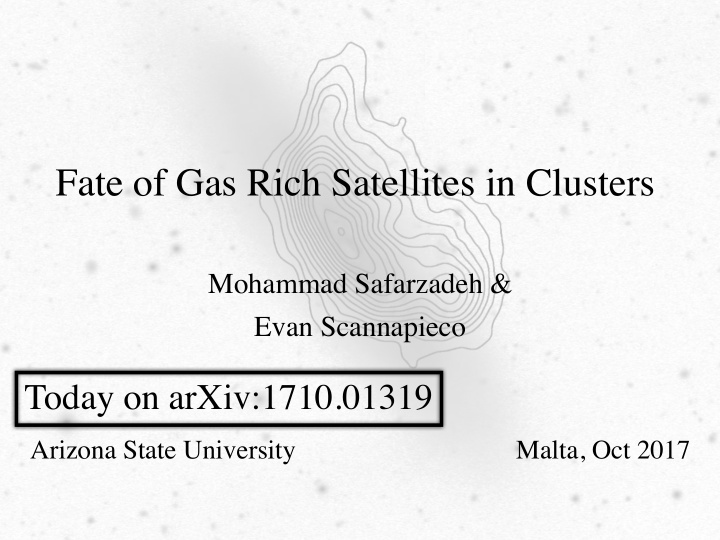



Fate of Gas Rich Satellites in Clusters Mohammad Safarzadeh & Evan Scannapieco Today on arXiv:1710.01319 Arizona State University Malta, Oct 2017
Ram Pressure Stripping (RPS) Chung+07 Emerick+16
DM halo Behroozi+13 Kravtsov+13 stellar Stellar disk mass size popping+15 Leroy+08 gas gas disk mass size
Potential=DM+Stars+Gas RPS Potential=DM+Stars
Impact on the orbits of the stars
Impact on the orbits of the stars
Losing the stellar content
Gas fraction evolution with mass and redshift Popping+12
Losing the stellar content
An Ultra Diffuse Galaxy in Coma Cluster DF44, Van Dokkum+15
Ultra Diffuse Galaxies in Abel Cluster Roman+16
Transforming into an UDG DF44, Van Dokkum+15
Red Fraction of Satellites Prescott+11
Summary • RPS of gas results in potential change in galaxies, more effective at larger halo masses. • Assigning the gas fraction based on observations results in low mass satellites to lose their stellar mass more effectively. • Ultra Diffuse Galaxies could be the result of such process. • Low red fraction of low mass satellites could be due to them being disrupted by this mechanism.
Gas fraction evolution with mass and redshift Popping+12
Outline • Ram pressure stripping • Impact of change in the potential on the orbits. • Gas fraction of galaxies across redshifts. • Implications for Ultra Diffuse Galaxies. • Implications for red fraction of satellites.
Recommend
More recommend